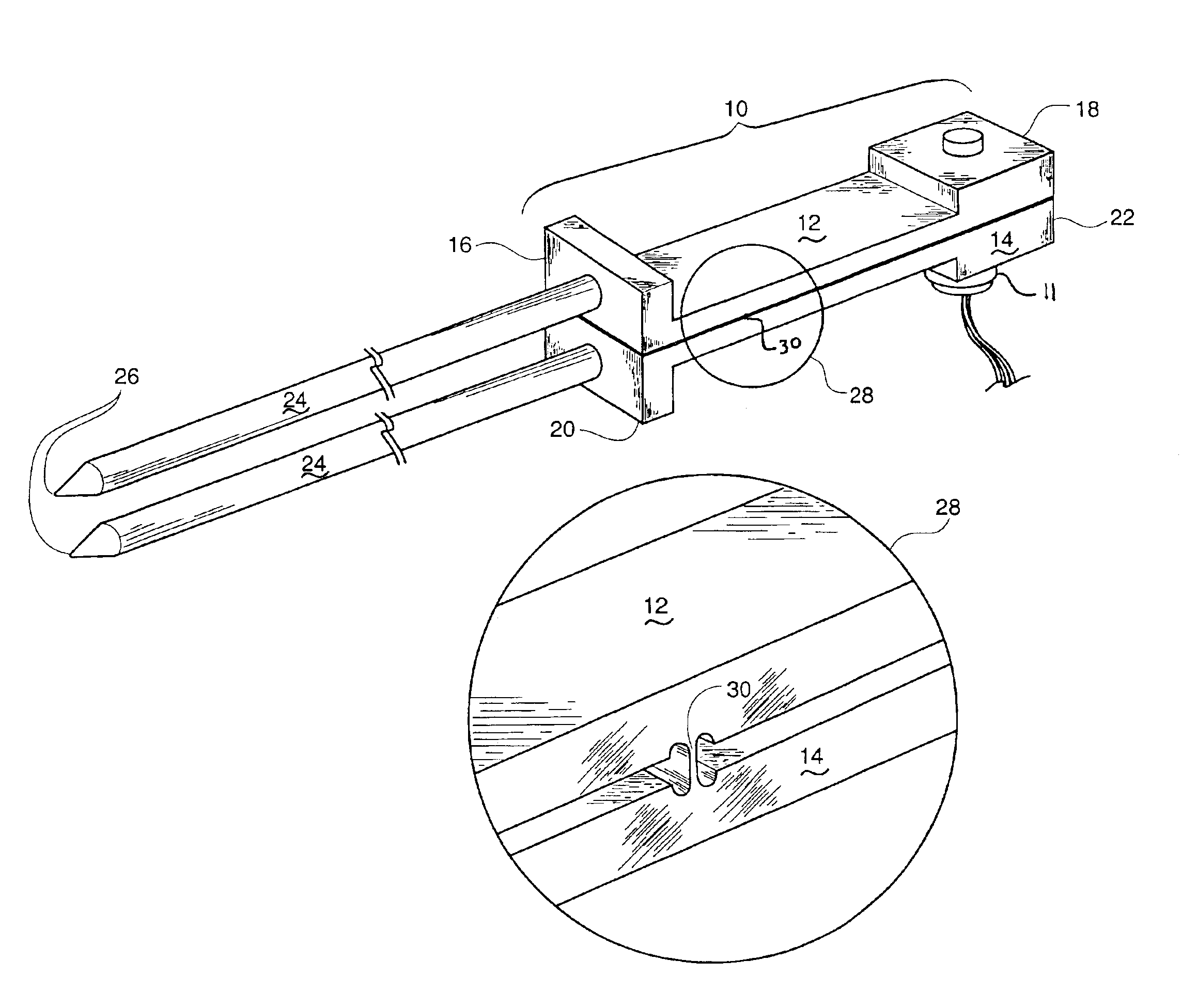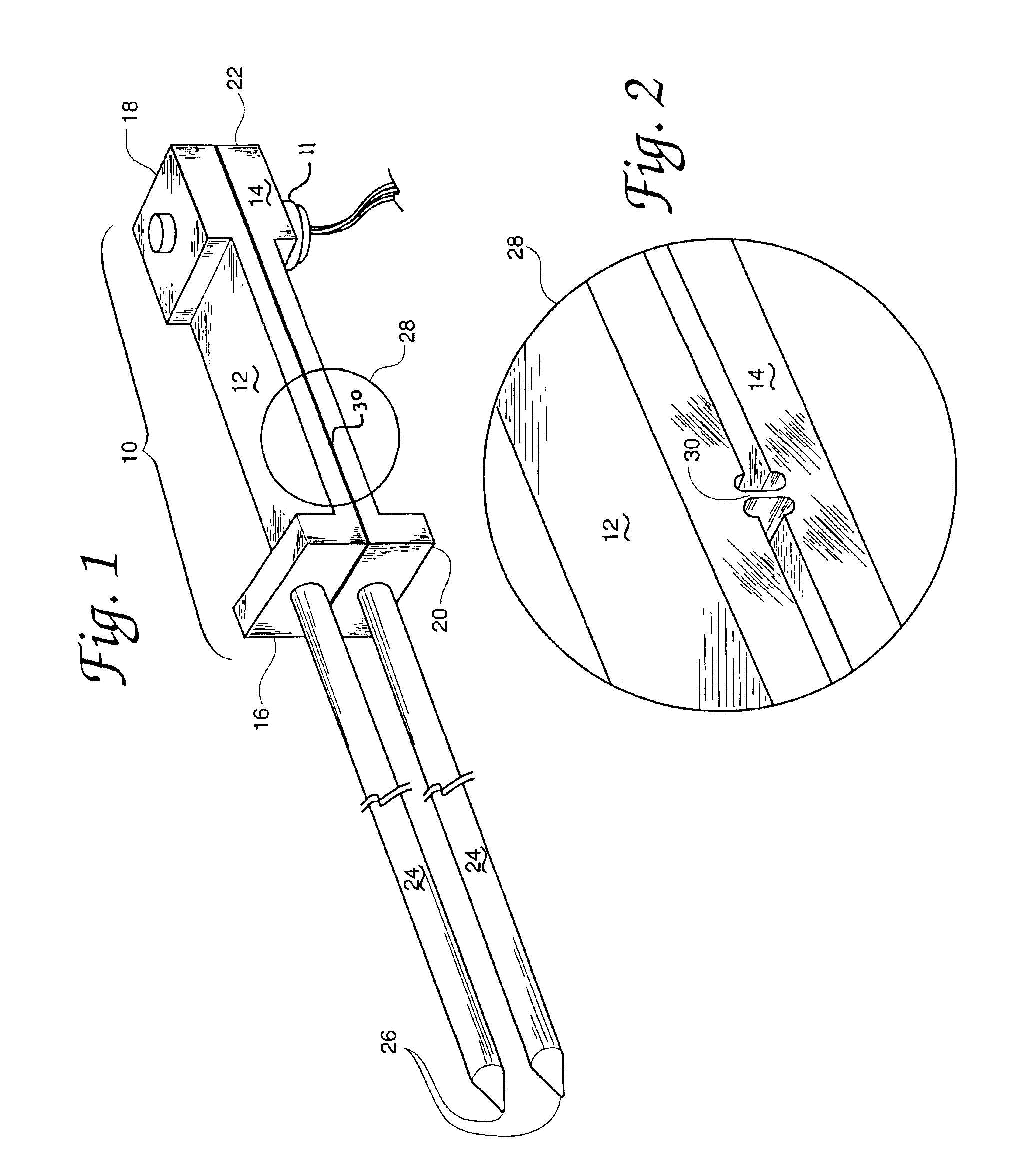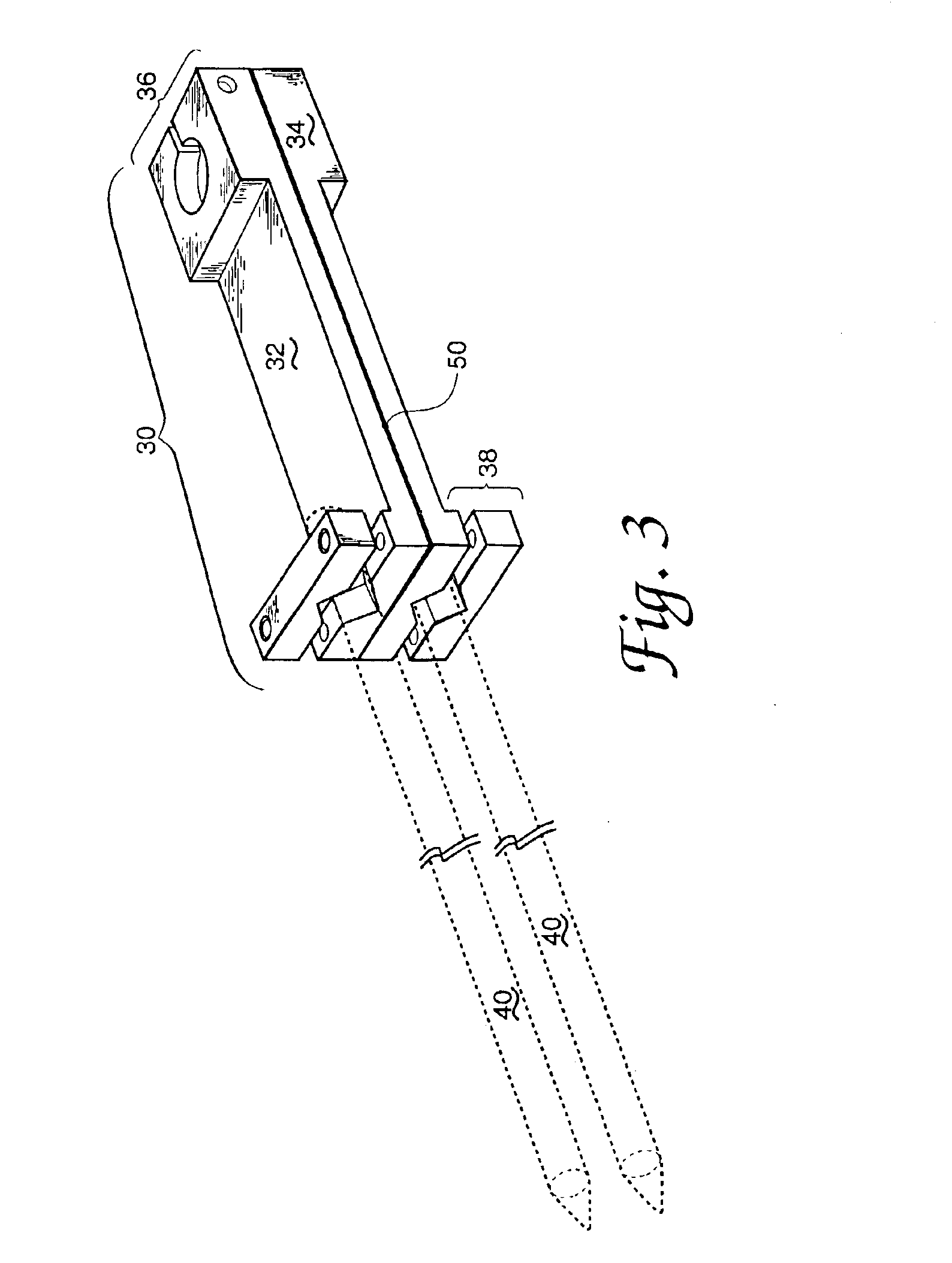Stable LVDT extensometer
- Summary
- Abstract
- Description
- Claims
- Application Information
AI Technical Summary
Benefits of technology
Problems solved by technology
Method used
Image
Examples
Embodiment Construction
[0025]Referring now to FIG. 1 of the drawings, there is shown a representational view of an LVDT extensometer according to the teachings of the present invention showing a perspective view of an extensometer body 10, an LVDT sensor 11 and a pair of attached specimen contact rods 24 for contacting a specimen to be tested. Extensometer body 10 comprises a first body part 12 and a second body part 14. First body part 12 and second body part 14 each have a long axis at which respective ends 18 and 22 extensometer body 10 is configured for mounting LVDT sensor 11. Similarly, first and second body parts 12 and 14 are each configured at respective other ends 16 and 20 of each long axis for attaching or mounting specimen contract rods 24. Each specimen contact rod 24 includes a tip 26 for contacting a specimen to be tested. Contact rods 24 will typically be made of quartz or other material able to withstand high temperatures. Contact rods 14 are long because in typical use they extend insid...
PUM
 Login to View More
Login to View More Abstract
Description
Claims
Application Information
 Login to View More
Login to View More - R&D
- Intellectual Property
- Life Sciences
- Materials
- Tech Scout
- Unparalleled Data Quality
- Higher Quality Content
- 60% Fewer Hallucinations
Browse by: Latest US Patents, China's latest patents, Technical Efficacy Thesaurus, Application Domain, Technology Topic, Popular Technical Reports.
© 2025 PatSnap. All rights reserved.Legal|Privacy policy|Modern Slavery Act Transparency Statement|Sitemap|About US| Contact US: help@patsnap.com



